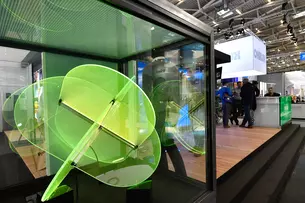Experience the construction industry in a new way: individual, simple and always up to date.
BAU Insights is a year-round information platform for the construction industry and offers users access to industry news, company articles, product overviews and manufacturer directories.
Discover now
List of companies

Discover

BAU 2023

digitalBAU 2024

Newsfeed

Watchlist

Sign up for the newsletter and receive regular news on highlights and events from the construction industry. Stay up to date with the newsletter - discover the benefits for yourself!
BAU Insights is the interface between on-site trade show visits and digital information platform for the construction industry. You can find out which themed worlds can be found here.

With BAU Insights, you benefit from our extensive network of exhibitors and partners - not only during the trade fair, but 365 days a year. Use your digital presence at BAU Insights and gain additional attention.
Get to know moreWith BAU Insights, you can not only keep an eye on everything for your next trade fair visit, but also experience the world of construction all year round - 365 days a year.
Get to know moreFor questions about platform usage of BAU Insights:

For questions about your BAU Insights presence:
